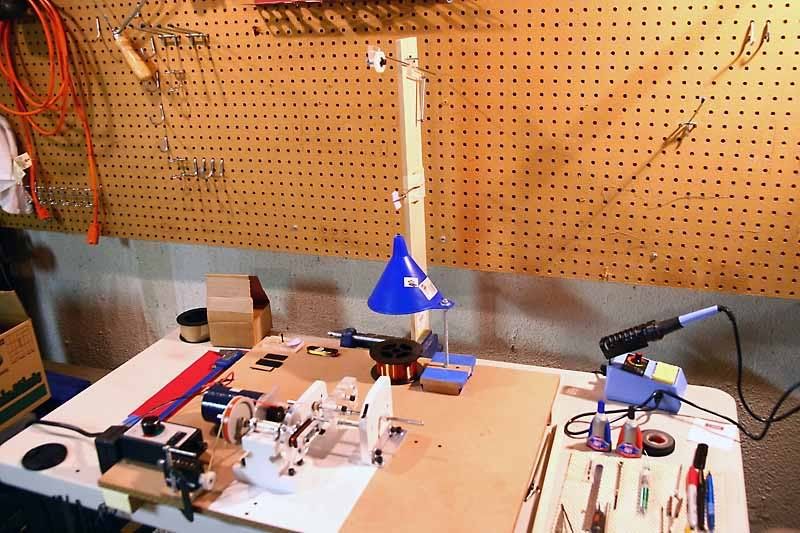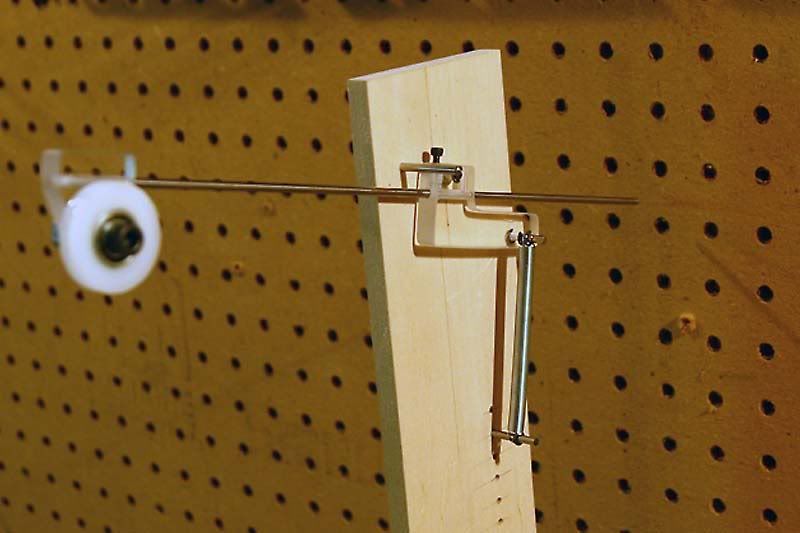Over the years I've been learning pickup making, I keep tweaking my setup here and there. I've only had one basic setup, but it has gone through countless revisions. I've come to a conclusion that one of the beautiful things of hand guiding is that your fingers are inconsistent, and are a tensioner and traverse control in one.
So, here's what I've encountered. If I use a rigid guide for a more mechanized traverse, as the bobbin (which is always irregularly shaped) pulls wire off of it, it pulls at varying speeds. My felt tensioner does a wonderful job with this, but my traverse setup relies on down pressure on the guide to keep the wire moving back and forth, so this ends up meaning that the wire is constantly slacking and stretching. This really seems to happen regardless of how I set my felt tensioner except on the extremes when it is totally slack or totally tight. My understanding is that this is where the old "rubber band" debate comes from of Fender lore. My motor is direct drive (an old drill motor) so I no choices to compensate at the plate, except to hope that some day I'll step up to a CNC setup where I can vary the winding speed (or maybe I shouldn't give away that idea).
Has anyone else dealt with this? I'm thinking that the bar I'm using for down-pressure on my traverse guide is the spot that needs to be fixed, but I'm not sure how. I don't know if I could possibly make it elastic without making it sloppy. Use a drinking straw instead of a metal rod? I've been scratching this spot in the back of my head raw working on this one... it is one of the last things to debug before a production run for me, and I'm hoping thinking out loud on this board will help.
Thanks!
So, here's what I've encountered. If I use a rigid guide for a more mechanized traverse, as the bobbin (which is always irregularly shaped) pulls wire off of it, it pulls at varying speeds. My felt tensioner does a wonderful job with this, but my traverse setup relies on down pressure on the guide to keep the wire moving back and forth, so this ends up meaning that the wire is constantly slacking and stretching. This really seems to happen regardless of how I set my felt tensioner except on the extremes when it is totally slack or totally tight. My understanding is that this is where the old "rubber band" debate comes from of Fender lore. My motor is direct drive (an old drill motor) so I no choices to compensate at the plate, except to hope that some day I'll step up to a CNC setup where I can vary the winding speed (or maybe I shouldn't give away that idea).
Has anyone else dealt with this? I'm thinking that the bar I'm using for down-pressure on my traverse guide is the spot that needs to be fixed, but I'm not sure how. I don't know if I could possibly make it elastic without making it sloppy. Use a drinking straw instead of a metal rod? I've been scratching this spot in the back of my head raw working on this one... it is one of the last things to debug before a production run for me, and I'm hoping thinking out loud on this board will help.
Thanks!




Comment